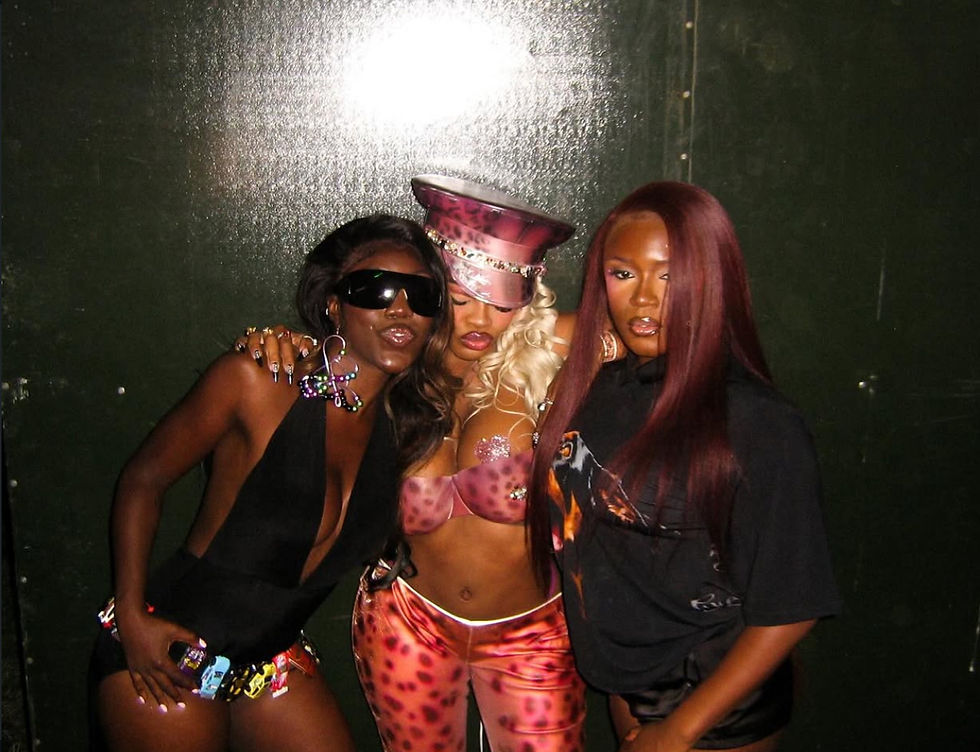Meet Kendrafilmz: Feeling in Black British Visual Culture [INTERVIEW]
- Zhakiya Sowah
- Oct 14
- 3 min read
When Kendra talks about her work, she rarely mentions the technical: the camera, the lens, the light. What she returns to, again and again, is feeling. “It’s about capturing the moment in the way that feels the most authentic to me,” she says. “It’s about making others feel what I felt in that moment.”

In her world, feeling is the organising principle. It’s what binds her friends, fuels her shoots, and shapes her exhibitions.“My work is a visual reflection of the people around me and what I’ve grown up around.” For Kendra, community isn’t a branding device or a curatorial buzzword; it’s the basis of her art. She speaks about her circle with reverence, describing her exhibition as “everyone’s exhibition.” The people in her photos were co-authors of the image. “When one person has an achievement, it feels like an achievement for everyone else,” she explains. “People use the word community as a gimmick, but for me, it’s about asking, are you actually giving back? Is your work really community-based?”

That grounding in friendship and collaboration traces back to her beginnings. Kendra started taking photos in secondary school with disposable cameras and candid shots of friends in corridors, “school memories,” as she puts it. Only later did she realise the weight of what she was documenting: a social archive of youth, belonging, and becoming. Those instinctive gestures evolved into a practice rooted in visual storytelling. Her work has evolved into shooting cover art, press photos, and behind-the-scenes imagery that retain the same intimacy of those early, unposed moments.

Colour and life radiate through her work as expressions of her worldview. “That’s kind of how I see the world,” she says. “I really try and emphasise colour because that’s how I see the people around me and my environment.” In Kendra’s imagery, colour becomes emotion made visible. To me, her work is representative of the worlds Black women build and inhabit.
When asked about her place in that lineage, she doesn’t hesitate. “Black women are the literal pioneers,” she says. “It’s absolutely everything that exists right now, especially when it comes to art.” Her voice carries the certainty of someone who’s seen how easily that fact gets erased. “In this industry, Black women are often pushed aside. So I make even more space for myself, emphasising who I am, my heritage, the culture I’ve grown up around. That’s the blueprint of everything.”

Kendra’s notion of “blueprint” isn’t metaphorical but structural. Her work operates as both homage and innovation, pulling from collective history to construct something alive, communal, and distinctly hers. You can see it in her collaboration with Ghanaian artist N4T for Ghana Must Go, a cover shoot whose reception stretched far beyond its immediate audience. “As we were shooting, I already knew it was going to do as well as it did,” she says.
This idea of worldbuilding recurs often in her language, a term borrowed from music and film that she applies to photography. It’s about constructing a space where emotion, heritage, and imagination coexist. Her own “world” extends far beyond London, as she’s born to Rwandese and Ivorian parents, raised in France, and rooted in Britain since childhood. It’s no surprise that her ultimate dream project isn’t a photo series but a feature film: “A feature film back home in Rwanda,” she says. “Whenever people think of Rwanda, they think of politics or the genocide. But no one talks about how beautiful the country really is. I want to show that.”

Returning to Rwanda, for Kendra, is about reconnection. “Last summer, I went back and met creatives there who were doing incredible work with so little,” she says. “It really emphasised the importance of always bringing it back home.” In her vision, heritage is infrastructure and a living network of creativity, collaboration, and renewal. In this sense, Kendra’s vision dialogues with a larger diasporic current in contemporary Black art: the drive to reframe ‘home’ as a site of ongoing creation.





Comments